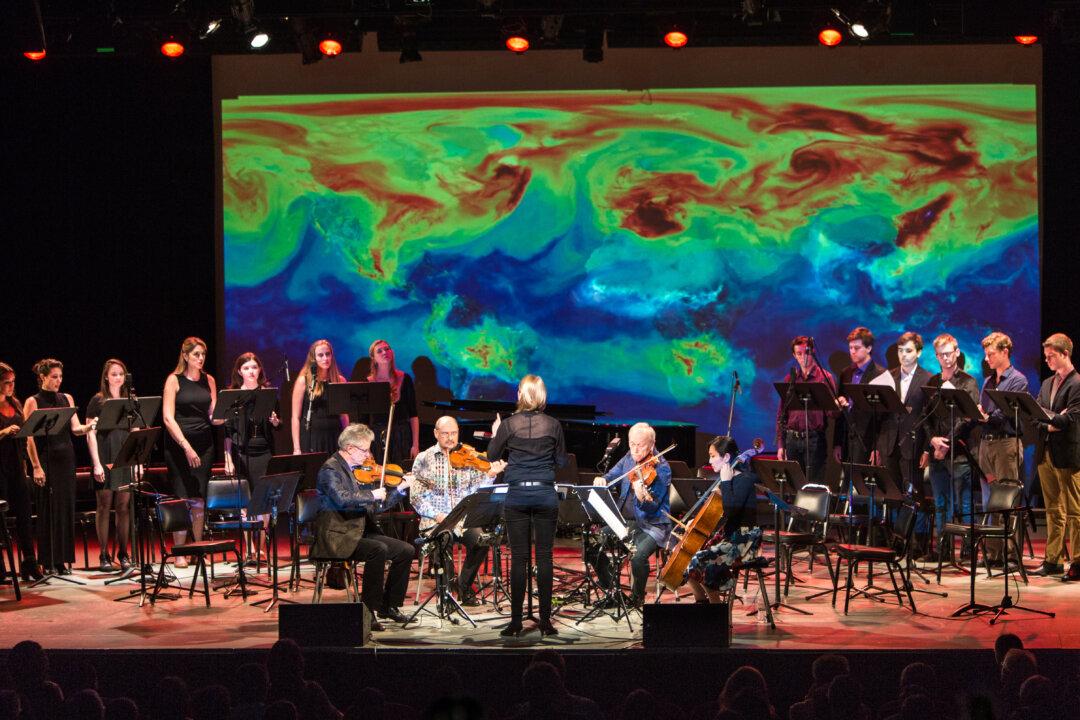NEW YORK—Temperatures are rising. Pollutants have been weaving a thickening blanket in the atmosphere, most rapidly in the past 50 years. That’s not even a blink of an eye in geological time.
Yet as the climate change debate continues percolating—some crying out the 11th hour, others denying any cause for alarm—a young composer simply looks at the hard data and transforms it into hauntingly beautiful, arresting music.

Vladislav Boguinia during a rehearsal of his piece "Rise," on Sept. 22, 2015. Benjamin Chasteen/Epoch Times






